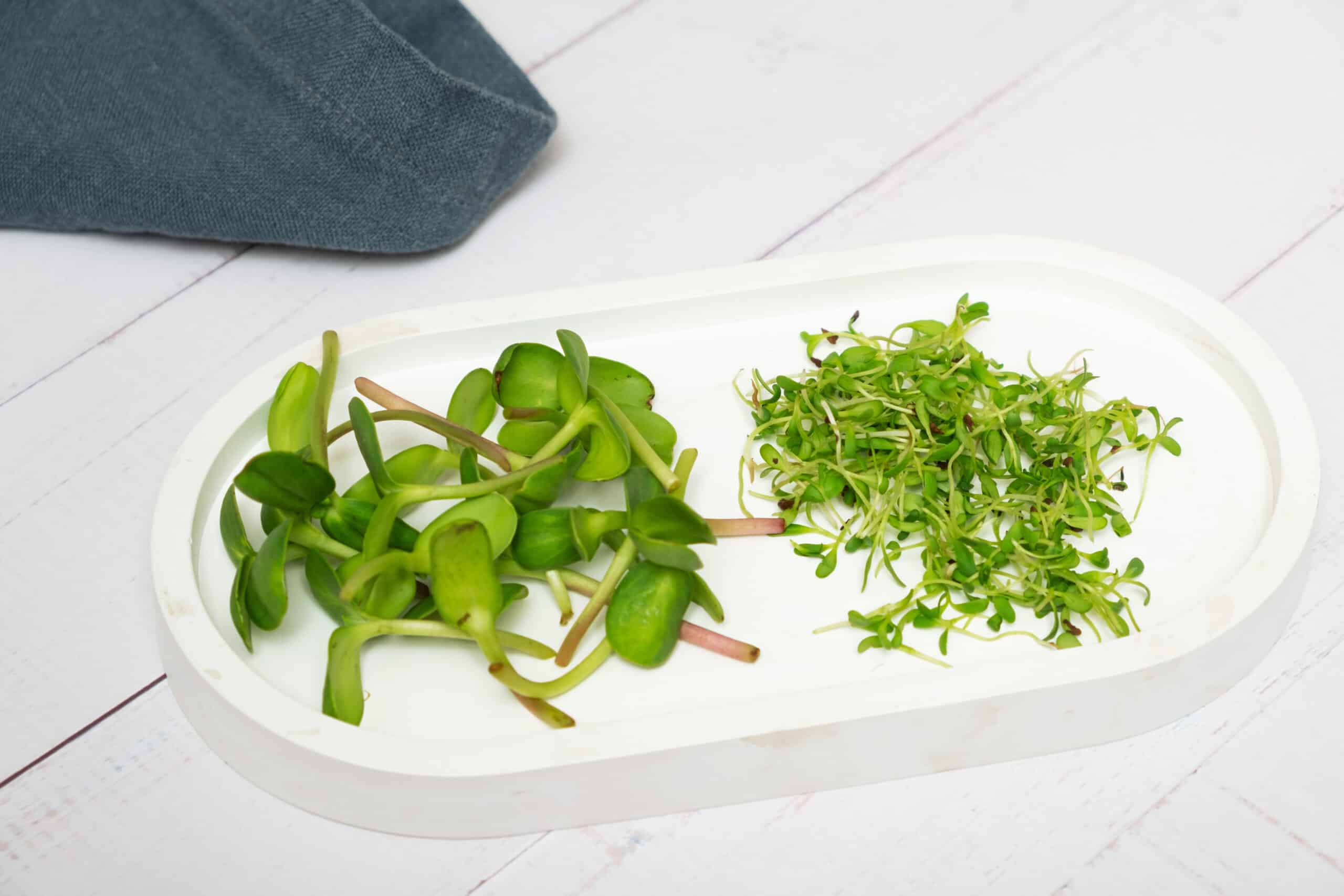How Long Do Microgreens Last in the Fridge?
Key Takeaways
- The shelf life of microgreens in the refrigerator typically ranges from 5 to 7 days.
- Maintaining proper storage conditions, such as storing microgreens in a sealed container or airtight bag and keeping them at a temperature between 35°F and 40°F (1.7°C and 4.4°C), can help extend their shelf life.
- Factors such as freshness at purchase, handling and care, and the specific variety of microgreens can also impact their shelf life.
Microgreens are small, nutrient-packed plants that have gained popularity in recent years due to their vibrant colors, distinct flavors, and high nutritional value. As a result, many people are now growing microgreens at home or purchasing them from local farmers’ markets or grocery stores. However, one question that often arises is how long microgreens can last in the fridge before they start to spoil. In this article, we will explore the shelf life of microgreens and provide some useful tips on how to extend their freshness.
The Shelf Life of Microgreens
According to various sources, such as Backyard Digs and Master Microgreens, the shelf life of microgreens in the refrigerator typically ranges from 5 to 7 days. Both sources agree on this timeframe, indicating that microgreens can be stored safely for about a week.
Backyard Digs also mentions that microgreens can typically be stored for about 5 to 7 days in the fridge. On the other hand, Master Microgreens provides a slightly longer storage time, stating that microgreens can be stored in the fridge for up to two weeks. While these sources differ in the exact duration, it is clear that microgreens can be safely stored for at least a week, and possibly up to two weeks, if properly handled.
Factors Affecting Microgreens Shelf Life
The shelf life of microgreens can vary based on several factors:
1. Freshness at Purchase
When buying microgreens, it’s important to choose the freshest ones available. Look for vibrant colors, crisp leaves, and a fresh aroma. Fresher microgreens tend to have a longer shelf life compared to those that have been sitting on the shelf for a while.
2. Storage Conditions
The way microgreens are stored can significantly impact their shelf life. To ensure freshness, it is recommended to store microgreens in a sealed container or airtight bag. This helps to prevent moisture loss and exposure to air, which can cause wilting and spoilage. Additionally, keeping microgreens in the refrigerator at a temperature between 35°F and 40°F (1.7°C and 4.4°C) helps to maintain their quality for a longer period.
3. Handling and Care
Proper handling and care can also extend the shelf life of microgreens. Avoid excessive handling, as it can damage the delicate leaves. It is best to only wash microgreens right before use, as moisture can promote spoilage. If any leaves appear wilted or discolored, remove them to prevent the spread of spoilage to the rest of the batch.
4. Variety of Microgreens
The specific type of microgreens can also impact their shelf life. Some varieties, such as broccoli microgreens, tend to have a shorter shelf life compared to others. It is important to consider the specific characteristics of the microgreen variety being stored.
Conclusion
In conclusion, the shelf life of microgreens in the fridge typically ranges from 5 to 7 days, according to sources such as Backyard Digs and Master Microgreens. While Backyard Digs suggests a storage time of about a week, Master Microgreens mentions that microgreens can potentially last up to two weeks if handled properly. Factors such as freshness at purchase, storage conditions, handling, and the specific variety of microgreens can all influence their shelf life. By following proper storage and handling practices, you can maximize the freshness and extend the shelf life of microgreens.
Related Websites:
FAQs:
Q: What are microgreens?
Microgreens are young vegetable greens that are harvested just after the first leaves have developed. They are packed with flavor and nutrients, making them a popular choice for garnishes, salads, and smoothies.
Q: How long do microgreens last in the fridge?
The general shelf life range for microgreens is around 5-7 days when stored properly in the fridge. Factors such as freshness at the time of purchase, storage temperature, and humidity can influence their shelf life. It’s important to look out for signs of spoilage or decay, such as wilting or discoloration, to determine if they are still fresh.
Q: What are the nutritional benefits of microgreens?
Microgreens are packed with nutrients and antioxidants. They are known to have more concentrated levels of vitamins, minerals, and phytochemicals compared to their mature counterparts. Incorporating microgreens into your meals can boost your immune system, improve digestion, and provide a rich source of essential nutrients.
Q: How can I extend the shelf life of microgreens?
To extend the shelf life of microgreens, it’s important to store them properly. Choose a container that allows for airflow, such as a breathable bag or container with ventilation holes. Before refrigeration, make sure to clean and dry the microgreens to remove excess moisture. Additionally, storing them at the right temperature and humidity level, and handling them gently, can help prolong their freshness.
Q: How can I incorporate microgreens into my meals?
There are numerous creative ways to incorporate microgreens into your meals. Use them as a garnish for soups, salads, or sandwiches to add a burst of flavor and visual appeal. You can also blend them into smoothies, sprinkle them over omelets, or use them as toppings for pizzas or tacos. Additionally, you can preserve microgreens for longer use by freezing them in ice cube trays or drying them to make homemade seasonings.






